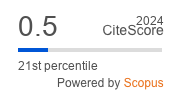Risk factors for progressive atopic dermatitis in children
摘要
The article presents the research data on risk factors for progressive AD in children and adolescents. The study enrolled 350 children and adolescents aged 1 month to 18 years with AD of varying severity. The average SCORAD index equal to 20,2±2,8 was regarded as mild, 48,7±2,8 — as moderate and 78,5±3,8 — as severe AD. It has been established that AD is more likely to develop into a severe form if the child has a hereditary allergy history, especcially if allergic diseases can be traced through the maternal line and/or one of the proband’s closest relatives suff ers from AD. Another adverse prognostic criterion for severe AD progression is its early onset, at the age of 3 months and earlier, especially if the desease aquires a severe form from the very beggining. The child’s living conditions also make for developing severe AD forms. There can be traced no diff erences in the levels of total IgE in patients with various AD who have a hereditary allergy history and the others who have not such a heriditary component. The total IgE level is signifi cantly higher in severe forms (р<0,001). In severe AD the frequency of sensitization to the main groups of food and inhalant allergens increases with aging as compared to patients with moderate AD.
关于作者
A. Kudryavtseva俄罗斯联邦
T. Korotkova
俄罗斯联邦
参考
1. Аллергические заболевания у детей / Под ред. проф. М.Я. Студеникина, проф. Т.С. Соколовой. М.: Медицина, 1986. 287 с.
2. Иванов Н.Р., Горчаков Л.Г., Астафьева Н.Г. Распространенность аллергических заболеваний у детей и некоторые вопросы организации специализированной помощи // Педиатрия. 1979; 11: 47–48.
3. Гапеев С.И., Мушкетов А.В., Сурков В.Д. и др. К вопросу распространенности аллергических заболеваний среди организованных детей // Тезисы всесоюзной конференции "Аллергические заболевания у детей". Махачкала, 1991. C. 13.
4. Novak N., Bieber T. Allergic and nonallergic forms of atopic dermatitis // J Allergy Clin Immunol. 2003; 112(2): 252-262.
5. Flohr C., Mann J. New insights into the epidemiology of childhood atopic dermatitis // Allergy 2013; 69 (1): 3–16.
6. Мачарадзе Д.Ш., Тарасова С.В. Динамика распространенности симптомов аллергических заболеваний по данным ISAAC (1997–2000 гг., М.) // Аллергология и иммунология. 2002; 3: 300–302.
7. Балаболкин И.И., Гребенюк В.Н. Атопический дерматит у детей. М.: Медицина, 1999. 240 с.
8. Балаболкин И.И., Садикова Т.Е. Клинико-иммунологические варианты атопического дерматита у детей и подростков и эффективность патогенетической терапии // Педиатрия. Журнал им. Г.Н. Сперанского. 2013; 3: 6–13.
9. Kerschenlohr K., Decard S., Darsow U. et al. Clinical and immunologic reactivity to aeroallergens in «intrinsic» atopic dermatitis patients // J. Allergy Clin. Immunol. 2003; 111: 195–197.
10. Bardana E.J. Immunoglobulin E (IgE) and non-IgE-mediated reactions in the pathogenesis of atopic eczema/dermatitis syndrome (AEDS) // Allergy. 2004; 59(78): 25–29.






































